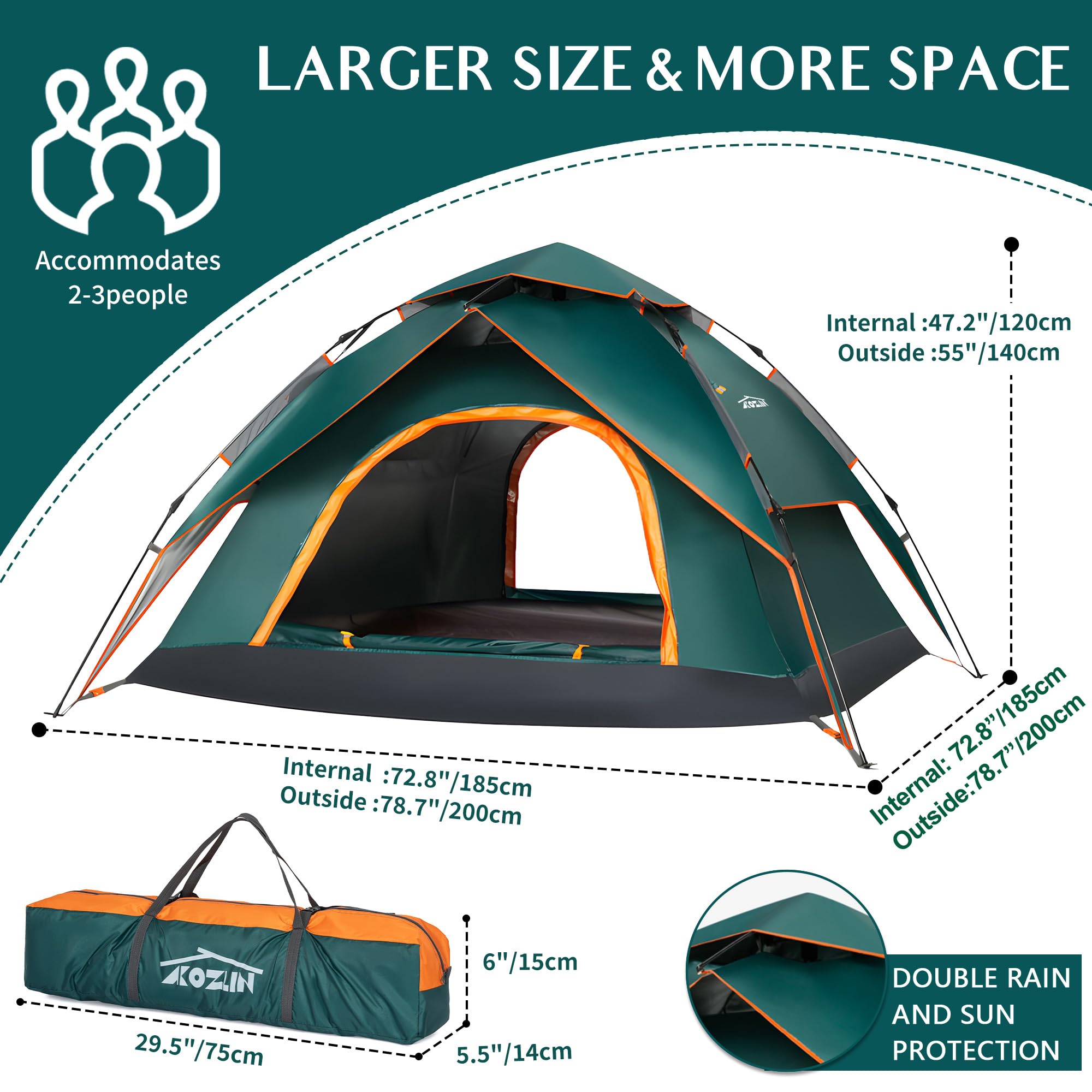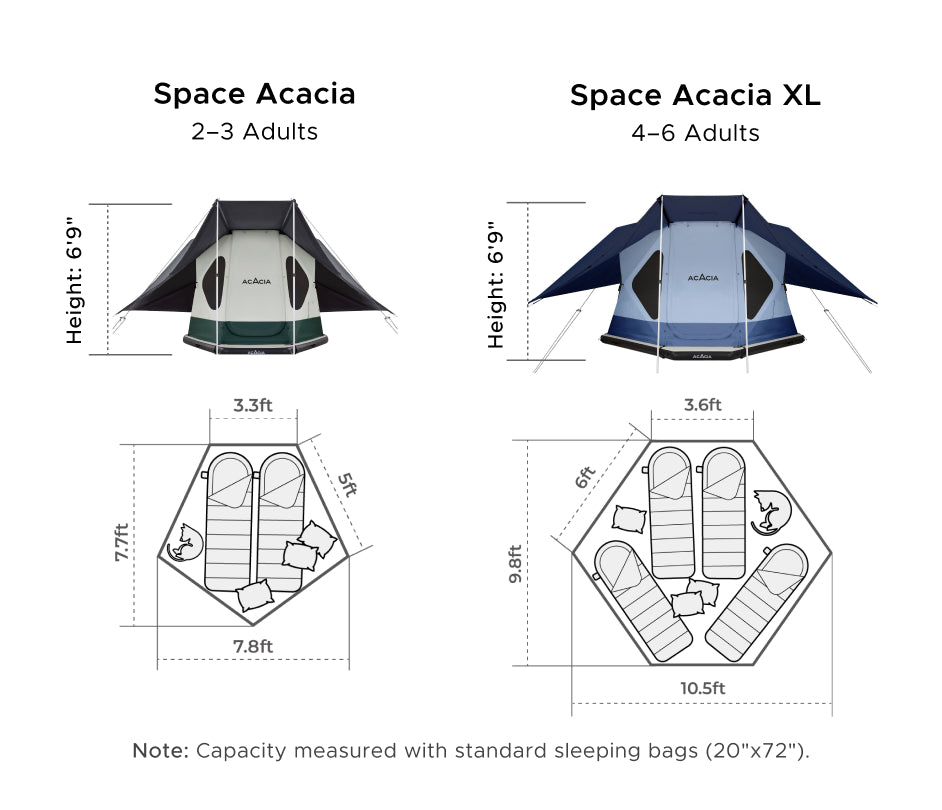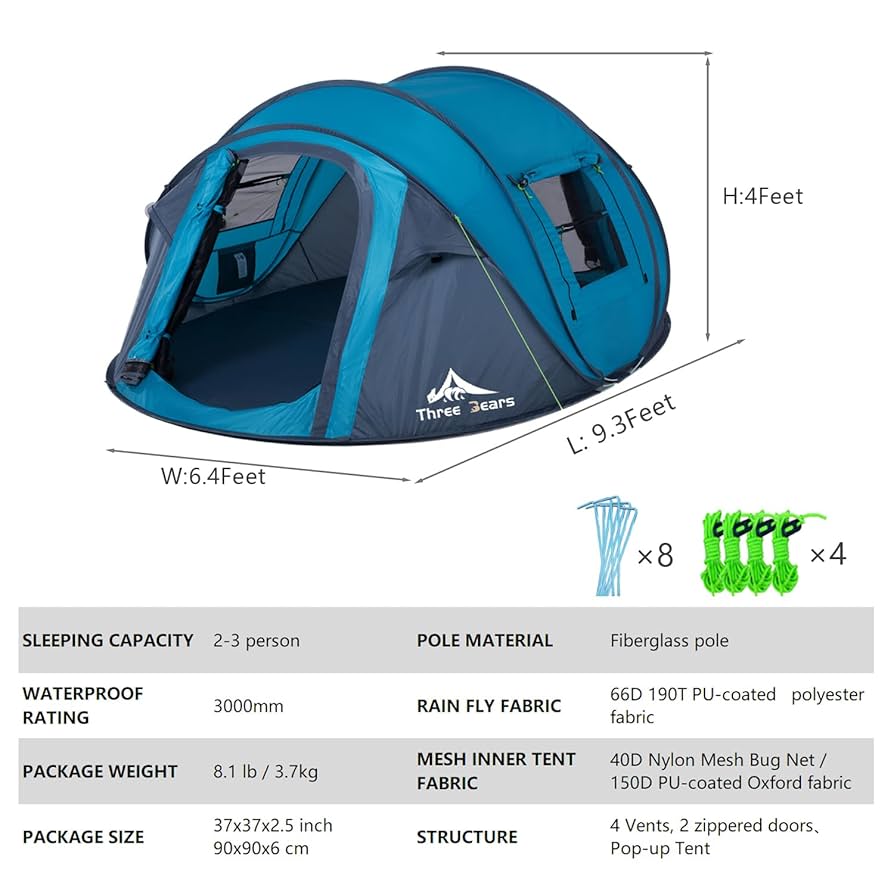This blog post may contain affiliate links. As an Amazon Associate I earn from qualifying purchases.
Choosing the right tent can make or break your outdoor adventure. But have you ever wondered what those tent capacity ratings really mean?
When a tent says it fits four people, does that mean you’ll all be comfortable, or just squeezed in like sardines? Understanding tent capacity ratings is key to picking a tent that fits your needs perfectly. You’ll discover how these ratings are determined, what to watch out for, and how to choose a tent that gives you the space and comfort you deserve.
Keep reading to make your next camping trip more enjoyable and stress-free.
Also Read: Tent Size Calculator By Tent Explorer
How Tent Capacity Is Measured?
Understanding how tent capacity is measured helps you choose the right tent size. Tent capacity shows how many people can fit inside comfortably. It also considers space for gear and movement. Different methods exist to measure this capacity. Knowing them prevents surprises during your camping trip.
Standard Sizing Methods
Tent capacity is often based on how many sleeping bags fit side by side. This is the most common way to measure. Each person gets about 20 to 24 inches of width. The tent’s floor area is divided by this space to get the capacity. Some tents list capacity based on the maximum number of sleepers. Others add extra space for gear or comfort. This method works well for basic tents and small groups.
Manufacturer Variations
Different brands use different rules to rate their tents. Some give a tight fit number, which means no extra room. Others include extra space for gear and movement. Some manufacturers measure floor area, others measure usable space. This causes variations in tent capacity ratings. Always check the tent’s exact measurements before buying. Reading reviews helps understand real space inside the tent.
Factors Affecting Tent Space
Understanding tent capacity means more than just counting people. Several factors affect how much space you actually need inside your tent. This helps you choose the right tent size for a comfortable camping experience.
Space inside a tent changes based on how you plan to use it. Think about where everyone will sleep and where you will keep your gear. These details shape the real tent space you need.
Sleeping Arrangements
Sleeping arrangements affect how much room you require. Some campers like to spread out with large sleeping pads or air mattresses. Others prefer compact sleeping bags packed side by side. Sharing a tent with kids or friends means you need enough space for everyone to sleep comfortably without bumping into each other.
The shape and size of your sleeping gear matter. Taller or wider sleeping bags take more room. Consider extra space for pillows or sleeping pads. Leaving a little walking space inside the tent makes it easier to move around during the night.
Gear Storage Needs
Camping gear also needs space inside the tent. Backpacks, shoes, and cooking tools should fit without cluttering the sleeping area. Some tents have vestibules or extra pockets for gear storage. These features free up the sleeping space and keep your items dry.
Think about the amount and type of gear you carry. Bulky equipment requires more room. Planning storage spots inside the tent helps keep things organized. A clutter-free tent feels more spacious and comfortable.
Types Of Tent Capacities
Tent capacity ratings show how many people a tent can hold. These ratings help choose the right tent for your needs. Different tents serve different group sizes. Knowing the types of tent capacities makes your camping trip easier and more comfortable.
Two-person Tents
Two-person tents are small and light. They fit two people and some gear. Perfect for solo campers who want extra space. Easy to carry on hikes or bike trips. They offer basic shelter and quick setup.
Family-sized Tents
Family-sized tents hold four to six people. They provide more room for sleeping and storing gear. Many have separate rooms for privacy. Good for camping with kids or friends. These tents offer comfort and space for longer trips.
Group Tents
Group tents fit eight or more people. Ideal for large groups or teams. Often have multiple rooms and large common areas. Designed for socializing and storing many belongings. They are heavier but great for base camps or festivals.

Credit: www.amazon.ca
Tips For Choosing The Right Size
Choosing the right tent size matters for a good camping trip. Too small and you feel cramped. Too large and you carry extra weight. This guide helps you find the best fit for your needs. Think about comfort, weight, and how often you camp. These tips simplify your choice and improve your outdoor experience.
Considering Comfort Vs. Weight
Comfort means space for sleeping and gear. More space feels better but adds weight. A tent rated for 4 people might fit 3 comfortably. Carrying a heavier tent can slow you down. Decide if you want more room or less weight. Choose a balance that suits your trip style.
Seasonal Use Impact
Season affects tent size choice too. Winter tents need extra space for gear and layers. Summer tents can be smaller and lighter. Four-season tents are often heavier but protect better. Think about the weather you expect. Pick a tent that fits seasonal needs well.
Common Misconceptions About Tent Size
Many campers misunderstand tent capacity ratings. These ratings often lead to wrong expectations about space inside the tent. This section clears up common mistakes people make about tent size. Knowing the truth helps pick the right tent for camping trips.
Overestimating Space
Tent capacity usually means the number of people it can hold. But it does not mean comfort for all. Manufacturers measure capacity by fitting people sitting close together. There is little room left for movement or personal items.
People often think a 4-person tent fits four adults easily. In reality, space feels tight with sleeping bags and gear inside. Expect less room than the number suggests. Look for tents with extra space for comfort.
Ignoring Additional Gear
Tent size ratings do not include space for backpacks or camping gear. Most campers store gear inside the tent for safety or convenience. This gear takes up space and reduces room for people.
Ignoring gear space causes tents to feel cramped. A tent rated for three might only fit two people and their gear comfortably. Consider tents with vestibules or extra storage areas. This keeps living space clear and more comfortable.

Credit: theacacia.com
Frequently Asked Questions
What Does Tent Capacity Rating Mean?
Tent capacity rating shows how many people can fit inside a tent comfortably.
Why Are Tent Capacity Ratings Often Smaller Than Expected?
Manufacturers use snug fits for ratings, allowing less space than users prefer.
How Should I Choose Tent Size For Comfort?
Pick a tent rated for more people than are in your group.
Does Tent Capacity Include Gear And Belongings?
No, capacity ratings count only people, not gear or bags inside.
Can Weather Affect Tent Capacity Usability?
Yes, bad weather needs extra space for gear and movement inside.
Are Family Tents Rated Differently Than Backpacking Tents?
Yes, family tents often have higher capacity ratings for extra comfort.
How To Read Tent Capacity Ratings On Labels?
Labels show max people inside; check if it suits your comfort needs.
Conclusion
Choosing the right tent size matters for comfort and safety. Tent capacity ratings show how many people fit inside. Always allow extra space for gear and movement. Consider the season and weather when picking your tent. A good fit means better sleep and a fun trip.
Use these tips to find a tent that suits your needs. Enjoy your outdoor adventure with the right shelter. Simple planning helps make camping easy and enjoyable.


